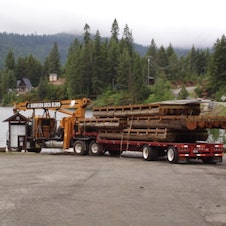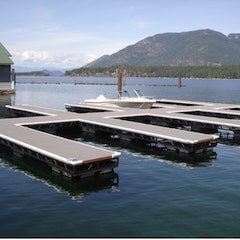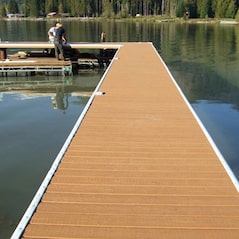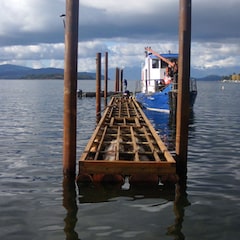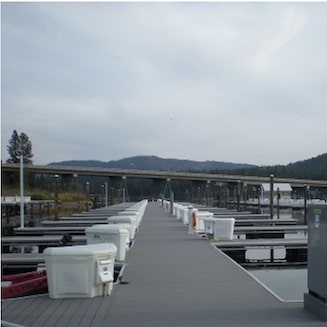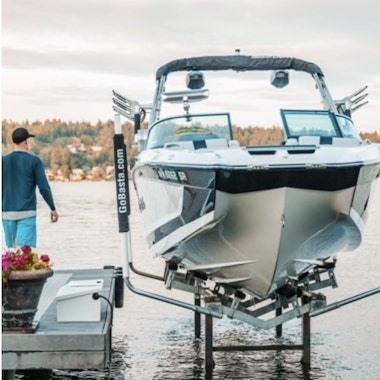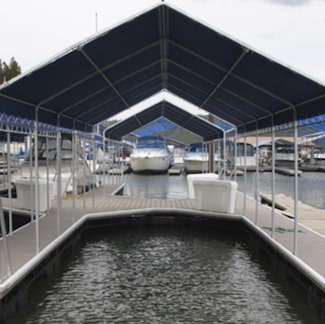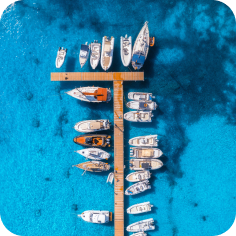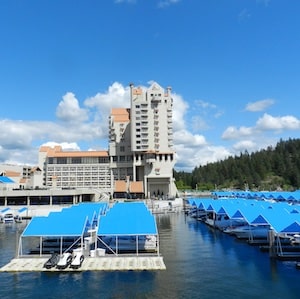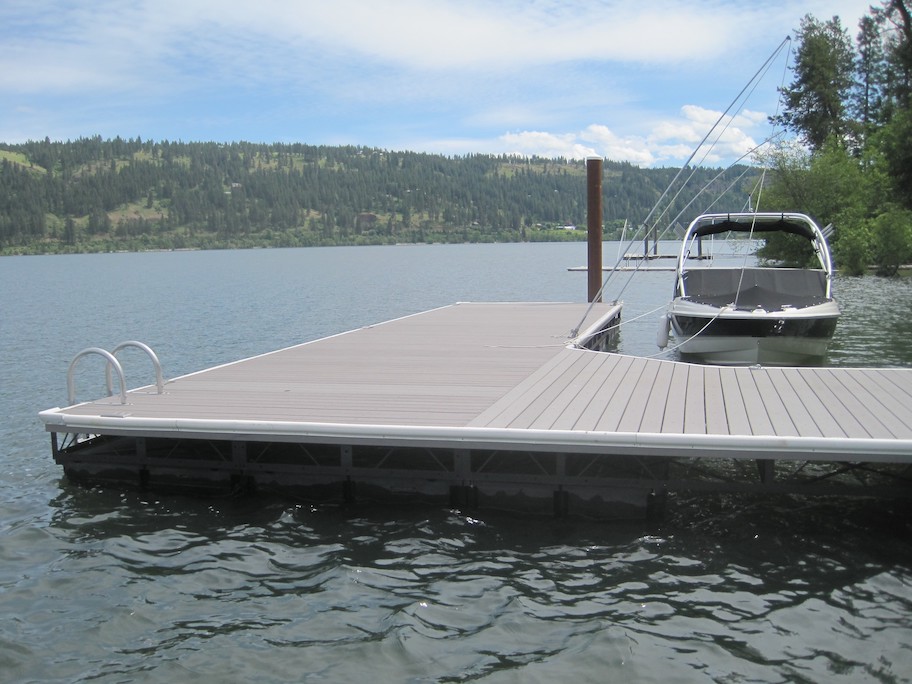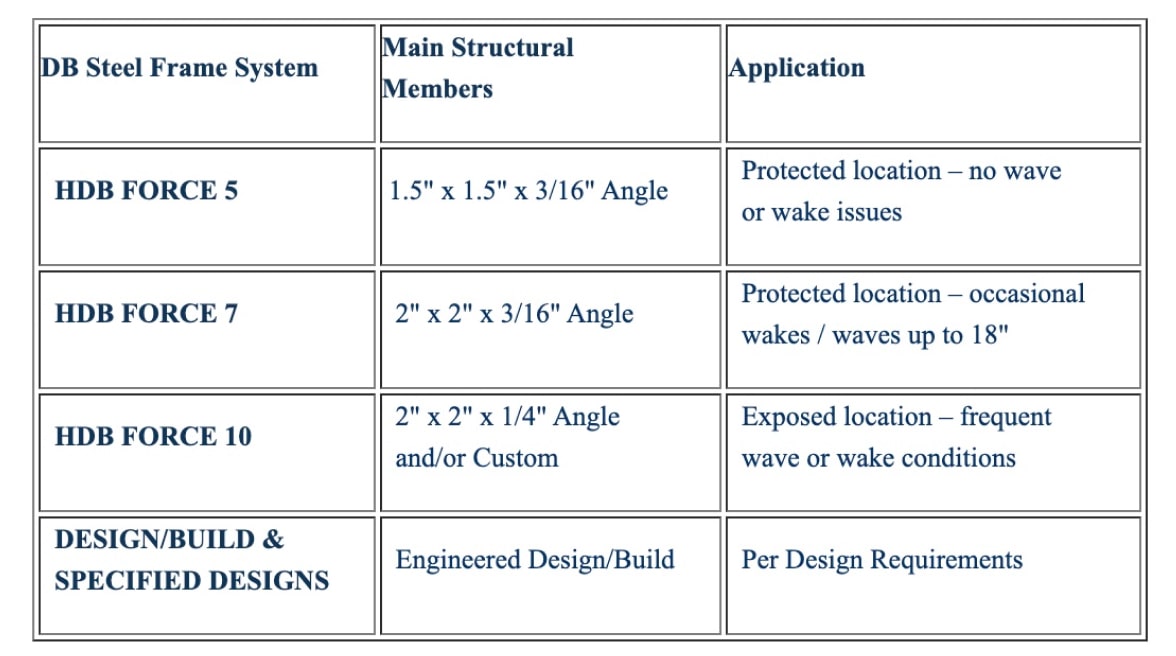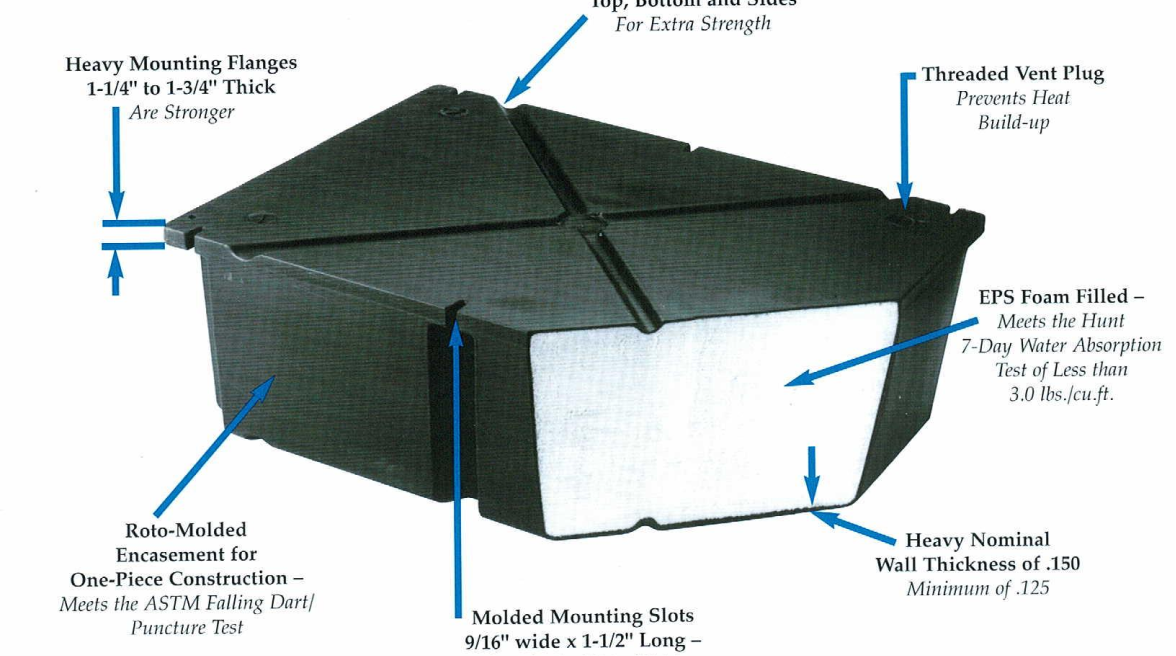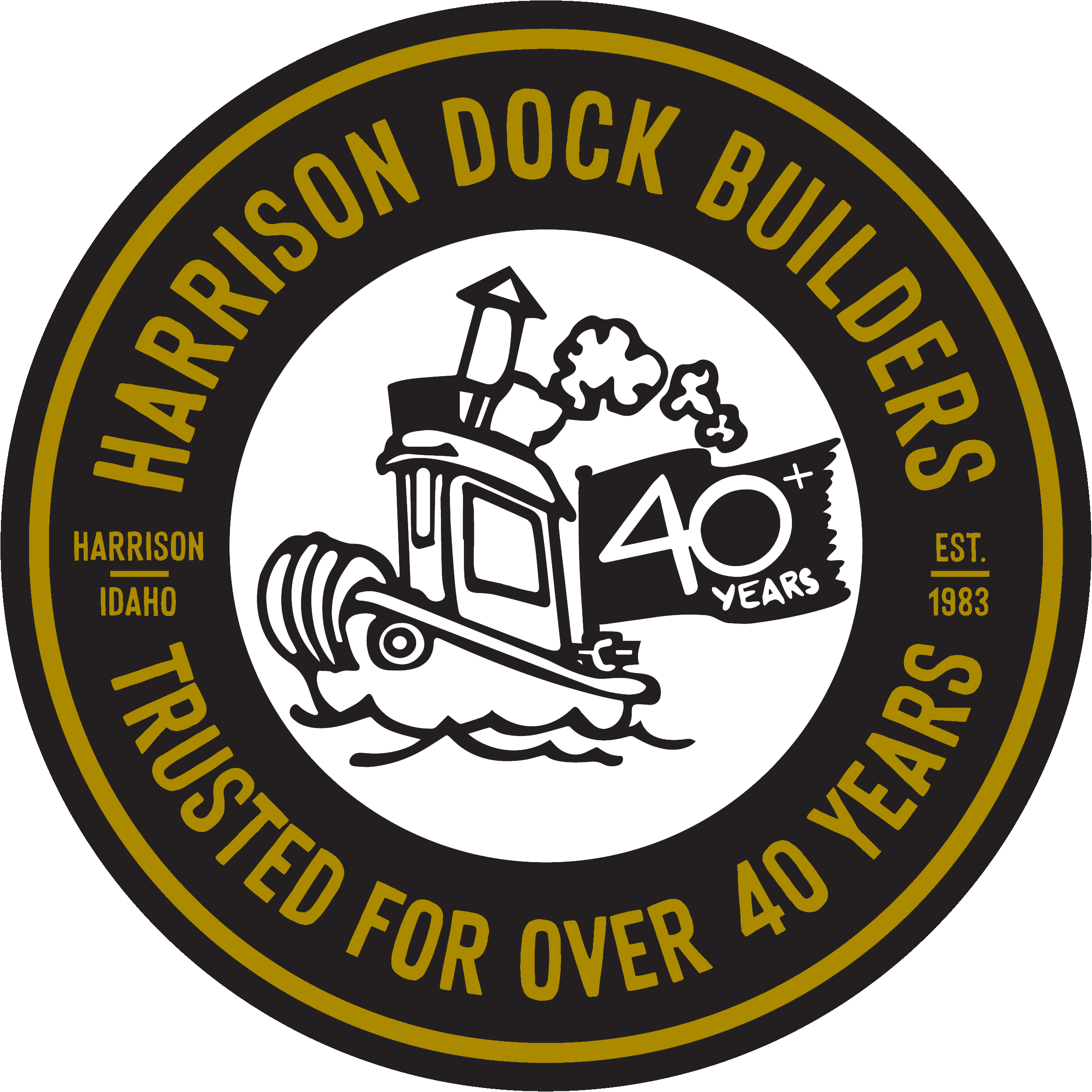Choosing the right dock system:
There are various floating dock systems available on the market, so choosing the one that fits your needs is essential. A modular floating dock is a popular choice as it’s easy to install and connect the sections, and the foam-filled dock floats provide excellent buoyancy. Look for a dock system designed to withstand different weather conditions, has UV inhibitors to prevent fading, and is low maintenance.
Incorporating accessories:
To enhance the dock’s aesthetic appeal, consider adding benches, chairs, and tables. You can also add a ladder for easy access to the water or a ramp for those who need it. Remember to include lighting for those evening swims or boat rides.
Creating a custom design:
A modular floating dock system allows for easy customization, so you can create a plan that matches your surrounding landscape. You can choose from different deck materials, such as wood, composite, or aluminum, and various lengths to fit your needs. Adding a hinge system to the dock sections can make it easier to remove and leave in winter.
Ensuring stability:
Stability is crucial for a modular floating dock system. The dock floats must be correctly installed and spaced to ensure the dock’s stability. Look for a dock system to withstand high winds, waves, and boat wakes.
By following these tips, you can create an attractive modular floating dock that looks great and is functional and easy to maintain. Then, work with a reputable dealer who can provide all the details and tools you need to install and enjoy your new dock system.
Ensuring Accessibility for Everyone:
Designing an Accessible Dock
Docks are not only a place to moor your boat or enjoy the sun and water but also for fishing, swimming, and other water activities. It’s essential to ensure that everyone can safely and easily access and enjoy the dock regardless of their abilities. In this blog, we’ll discuss how to design an accessible dock.
Building the Dock to Accommodate Individuals with Disabilities
To make the dock accessible to individuals with disabilities, it’s essential to design it with accessibility in mind. The first step is to choose a floating dock system that meets accessibility standards. Modular floating docks are an excellent option because they can be customized to fit your specific needs.
By following these guidelines, you can ensure your dock is accessible to everyone.
Designing an accessible dock is crucial to ensure that everyone can enjoy the water and all its activities. When building the port, it’s essential to consider the needs of individuals with disabilities and ensure that the dock meets accessibility standards. Adding ramps and handrails can make a significant difference in making the port easy and safe to access. By designing an accessible wharf, you can ensure that everyone can enjoy the water and all its activities.
Providing Stability and Security
When building a floating dock, stability and security are two critical factors that should be considered. A well-designed floating dock should provide a stable and secure platform that can withstand the elements and offer a safe and comfortable space for people and boats.
One of the primary considerations for stability is choosing suitable dock floats. Dock floats are the building blocks of any floating dock system and provide the buoyancy that keeps the dock afloat. High-quality dock floats are designed to withstand the weight of the pier and the people and boats that will use it. Therefore, when selecting dock floats, choosing ones rated for the intended use is essential and will provide adequate buoyancy.
Another way to enhance the stability and security of a floating dock is to incorporate hinged and connected dock sections. Connecting the areas creates a less likely unit to shift or move in the water. In addition, hinged branches provide an added level of security, as they allow the dock to proceed with the water while remaining securely attached.
Foam-filled dock sections are also an excellent choice for adding buoyancy and stability to a floating dock. These sections are filled with foam, which provides additional buoyancy and makes the port more stable in the water. In addition, foam-filled dock sections are less likely to be damaged by boat wakes or other water activity.
In addition to stability and security, it’s essential to consider the overall design of the floating dock. An attractive design can enhance the dock’s appeal while providing a comfortable and safe space for people and boats. High-quality dock systems are designed with the customer in mind and are customizable to meet individual needs and preferences.
Overall, building a floating dock with stability and security in mind requires careful consideration of several factors, including selecting dock floats, incorporating hinged and connected dock sections, and using foam-filled dock sections. By considering these factors, you can create a dock that provides a safe, comfortable, and secure platform for all your water activities.

